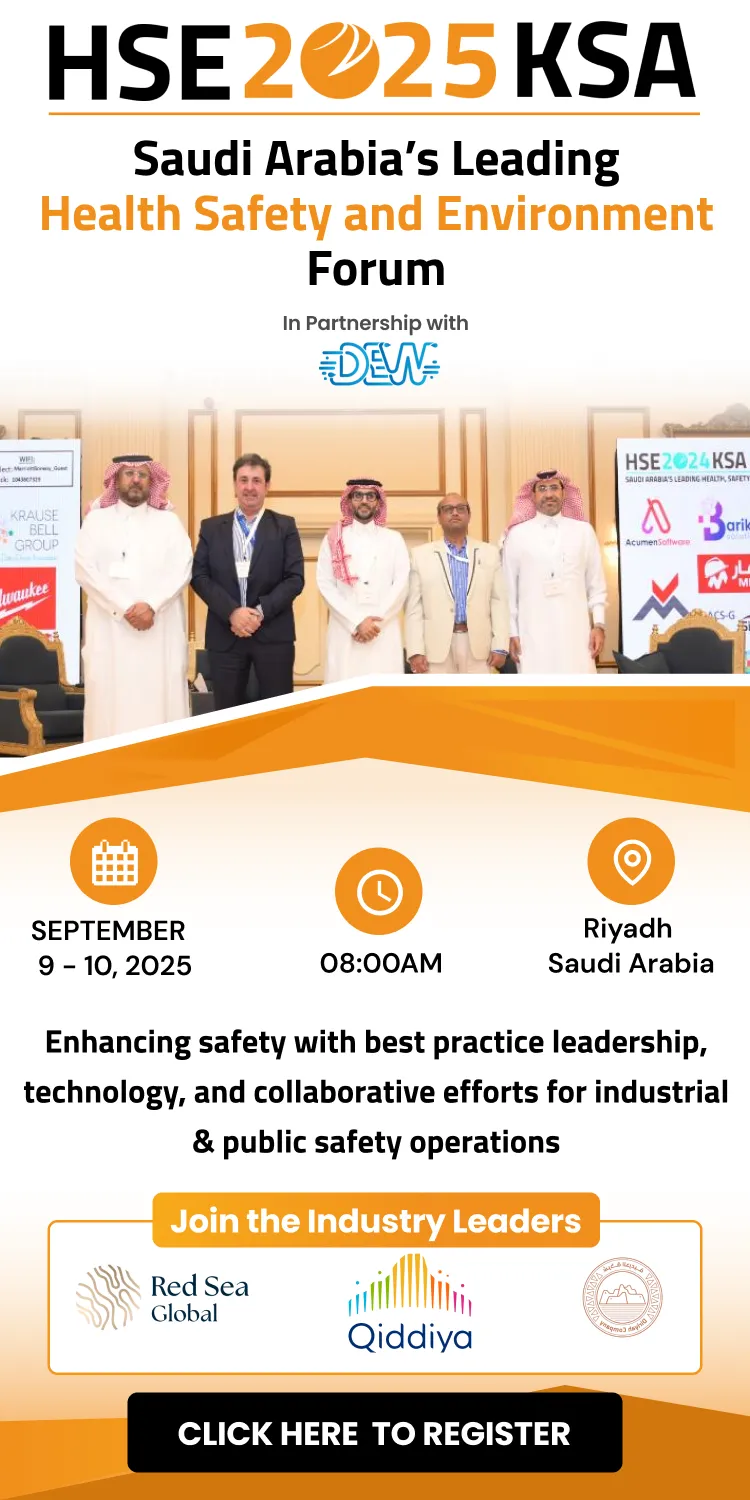In a session at the virtual HSE Oman Forum moderated by Dr Oualid Ali, founder and president of The Tunisian Association for Future Foresight, Yousra Kindi, snr. behaviour and safety advisor for Petroleum Development Oman and Willem Nel, GM HSSE, Port of Salahah, discussed the HSE systems that their organisations have put in place in order to limit workplace incidents
Opening the session, Dr Oualid Ali said, “We are living in the biggest challenge to global health with Covid-19 and a lot of challenges related to the environment. But the good news is the fourth industrial revolution comes with a lot of technology to tackle these challenges such as IoT, big data, block chain. AI especially is the tip of the iceberg which, with things such as computer vision, machine learning and deep learning, has many applications for HSE. It can be used, for example, to detect when people are wearing safety equipment or, in the case of Covid-19 whether they have a high temperature or not. Machine learning and data science can also be used to predict and prevent future incidents. There are hundreds of case studies I could give for applications of technology used in the field of HSE.”
Yousra Kindi then described IHTIMAM, PDO’s Behaviour Based System which is utilised across the company and all its contractors. This gives employees the ability to report safe and unsafe behaviours, along with their root causes, and remotely input them into the system which will then generate actionable insights to prevent such occurrences from happening again. As each contractor has their own tasks and risks, they receive a customisable card to identify areas they would like to focus on and behaviours they would like to correct to prevent incidents from happening again.
Up until 2017, Kindi continued, PDO had been using the S.T.O.P system but found that while it was competent, it was restrictive in the fact that it did not have tracking or a comprehensive data base, it was only focused in the field and, as it was an external system, PDO was not able to advance and alter it when they saw fit. The IHTIMAM BBS system addresses these issues by maintaining an advanced data base to record observations and check where actions need to be taken, extend the focus to office as well and, as it is developed in house, allows the company to continually advance and improved it.
Willem Nell described how the Port of Salalah uses digitised capture to identify high risk hot spots and generate corrective and preventive actions. When observations are made they are investigated and receive a preventive action which will then by categorised into the high risk standard they relate to (the top priorities are transportation, suspended loads, working at height, stored energy and control of contractors, with several sub-applications as well). If an employee does not take the advised action to prevent the incident in the future then it will be flagged to a gatekeeper who will prompt them and take high steps if necessarily.
With new technology coming thick and fast in the modern world, the panellists noted that this could often lead to resistance form employees, and so it was important to implement policies to encourage them make use of these systems and claim the benefits they offer. Nel said, “At the end of the day the tool is only as good as the people who are using it. People do resist change so you must first get buy in from top management and then get it down to front line management. Also, make sure the tool is designed to be user friendly. We have made our system into an app on a mobile phone which everybody has nowadays. Additionally, the tool must be accurate so people believe and can see the output of it. Finally, as it is the front line staff who play the vital role in making sure people are safe, we give front line management KPIs (such as a certain amount of observations a week) to encourage them to use the tool.
Kindi added, “We have a percent score of a behaviour that needs to be corrected. So once a behaviour is identified and uploaded we need to correct it from unsafe to safe and in order to do that you need to sustain a safe score of 90% which will be reviewed every six months. This is a KPI and once done we replace it with another focus.”
“We also focus on the quality of observation, not just quantity. We want to see that feedback is given to the people you are observing so we check the quality of the observation card and we have regular meetings with contractors to go through all the cards and identify areas for improvement. We ensure that the system is capturing good feedback and observations in order to correct unsafe behaviour.”
“Every six months we do a deep dive to check if incidents are being properly reported by the contractor. From our experience this system has helped in improving safety performance and dropping the LTIs but sometimes we see that incidents relating to a behaviour may still be occurring. We therefore immediately conduct a face to face meeting to solve this.”
The implementation of such systems has improved action response on ground levels, and also makes big data available for executive management to observe facilities across the whole organisation - providing a bird's eye view. However Nel concluded the session by advising against over-reliance on such systems as comfort zones can lead to relapses. For instance, because the system is all digital there is a tendency for office workers to conduct inspection solely online. Therefore his company has implemented a system where the inspector must take pictures with a date and time on the site, as well as taking out team members. Some observations must be made on site and this will also prevent short cuts being taken. Additionally, seeing executive management in the field using the system will encourage others to use it as well.





